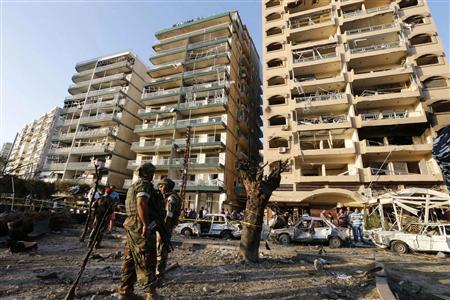(Reuters) – Al Qaeda’s North African branch blamed Lebanese Shi’ite Muslim militant group Hezbollah for twin bombs that hit the northern city of Tripoli on Friday and threatened retribution, a U.S.-based intelligence monitoring website reported on Saturday.

Although al Qaeda in the Islamic Maghreb, or AQIM, is not operational in Lebanon, its statement shows a growing regional hatred against Hezbollah by radical Sunni Muslim groups and a wider, deepening sectarian divide in the Middle East.
AQIM said in tweets it knew “with certainty” that the Iranian-backed Hezbollah was responsible for the attack that killed more than 42 people in Tripoli.
“That vile party … should know that it will meet retribution soon,” AQIM said, according to the SITE monitoring service.
Hezbollah, which was once lauded by both Sunnis and Shi’ites for its battles against Israel, has lost support from many Sunnis since it joined Syrian President Bashar al-Assad’s side in his 2 1/2-year-old fight against a majority Sunni uprising.
Syrian rebels, whose strongest elements are radical Sunnis, have been hosted in neighboring Lebanon by sympathetic Sunnis and there have been attacks on Hezbollah members on Lebanese soil. Both Hezbollah and radical Sunni groups in Lebanon have sent fighters into Syria to fight on opposing sides.
The explosions in Tripoli, 70 km (40 miles) from the capital Beirut, were the biggest and deadliest there since the end of Lebanon’s own civil war and came a week after a huge car bomb killed at least 24 people in a Shi’ite district of Beirut controlled by Hezbollah.
“We know with certainty that behind this deplorable act committed against are the hands of the vile, rafidah Hezbollah, which stands side by side with Bashar in Syria,” the AQIM tweets said, as quoted by SITE.
Al Qaeda groups follow a hardline ideology that rejects all non-Sunnis as infidels and regularly incites antagonism towards Shi’ites. Assad’s family is from the Alawite sect, an offshoot of Shi’ite Islam.
(Reporting By Mirna Sleiman; Editing by Oliver Holmes and Mark Heinrich)





